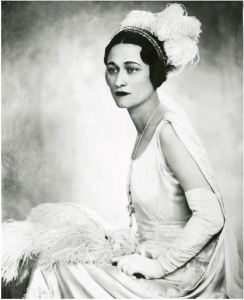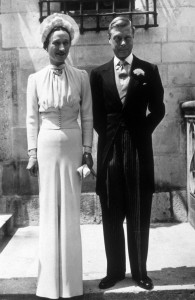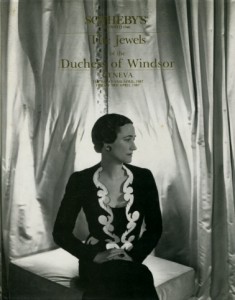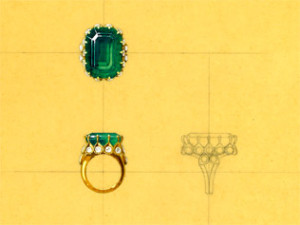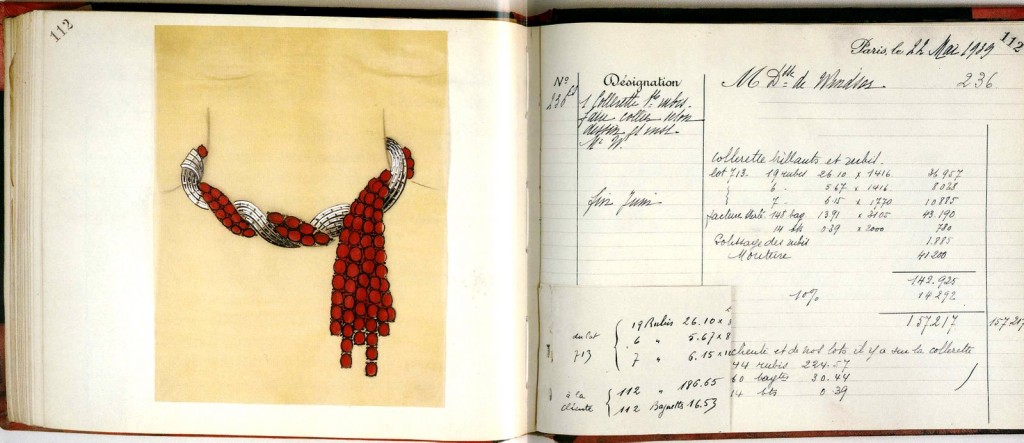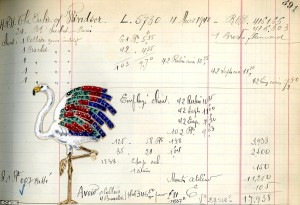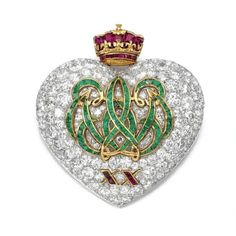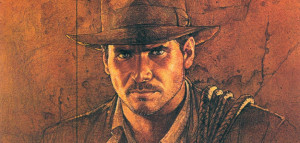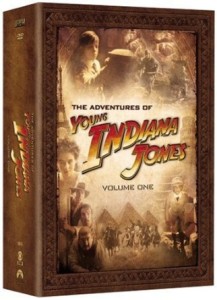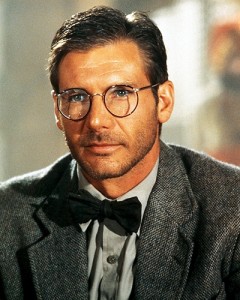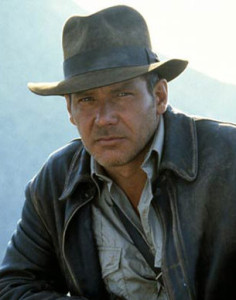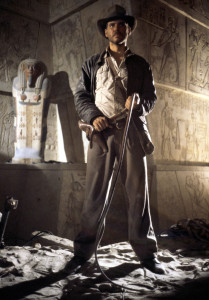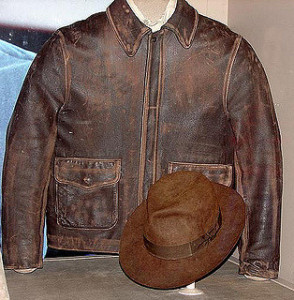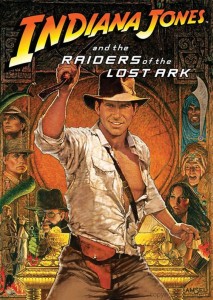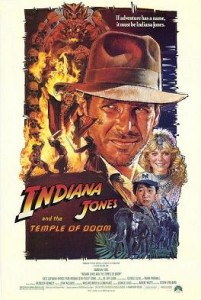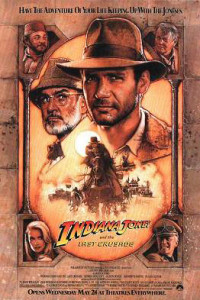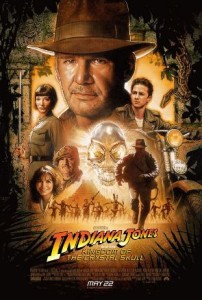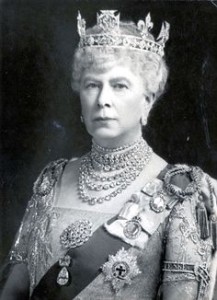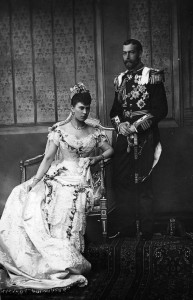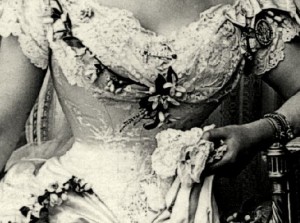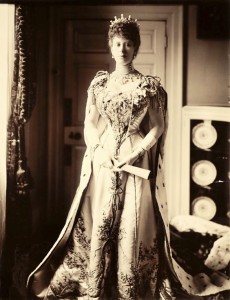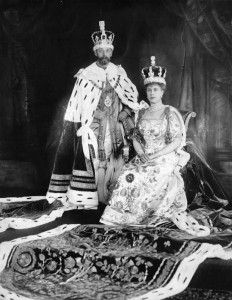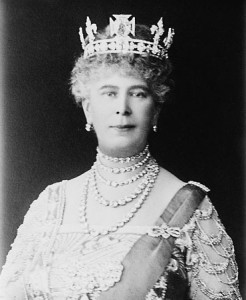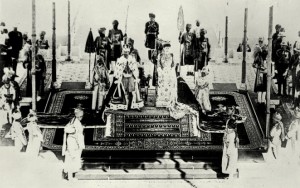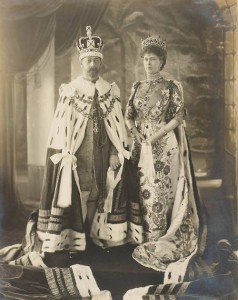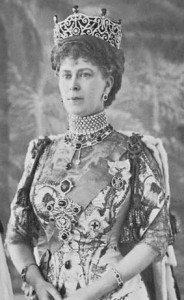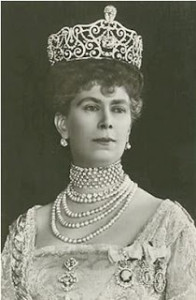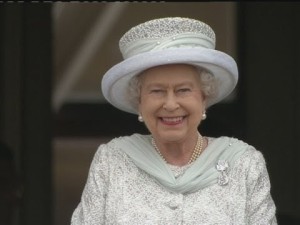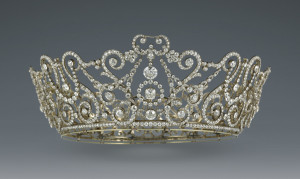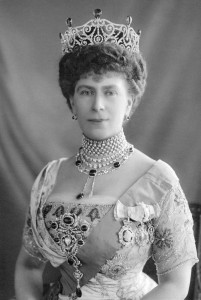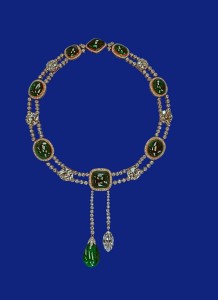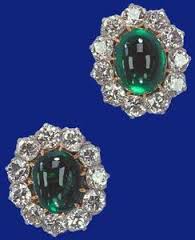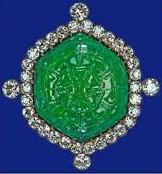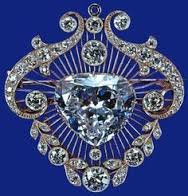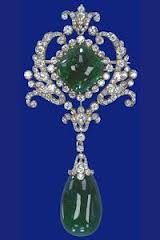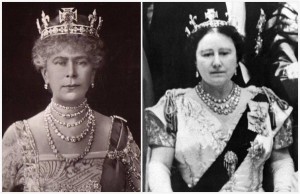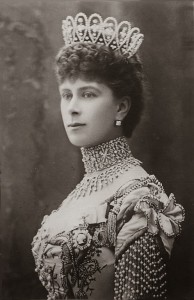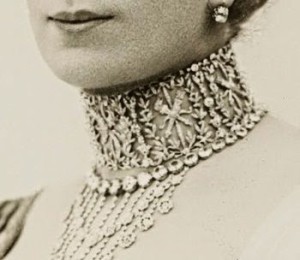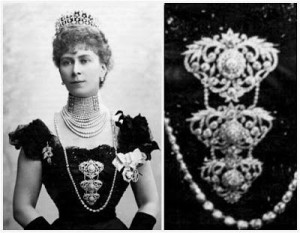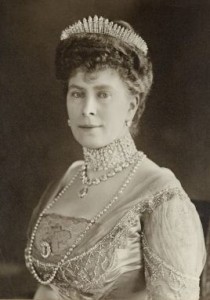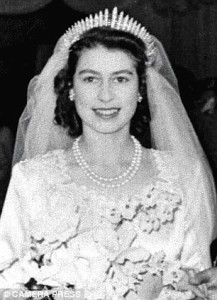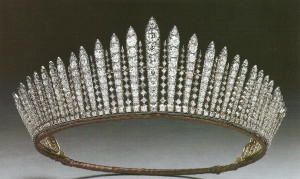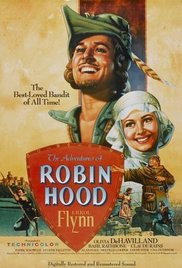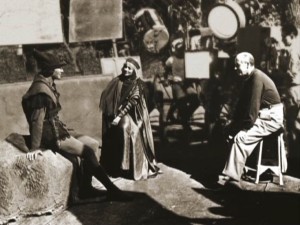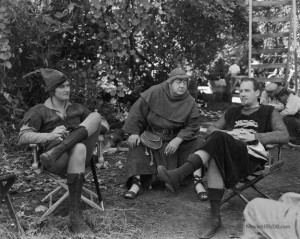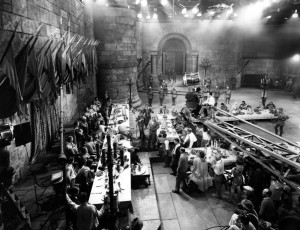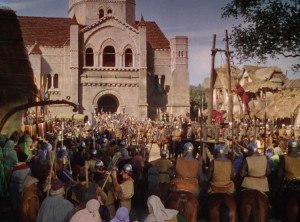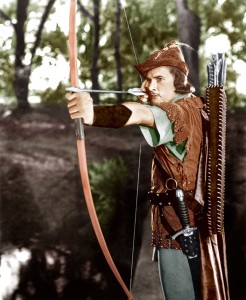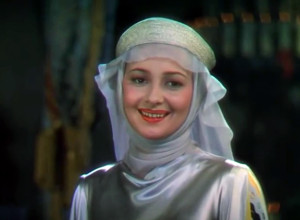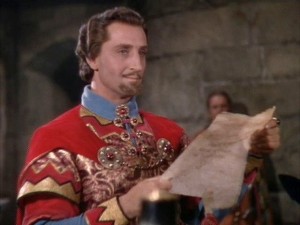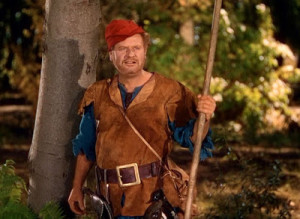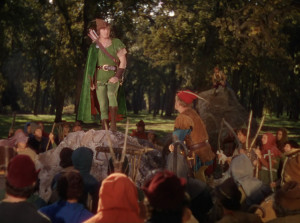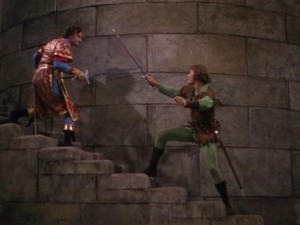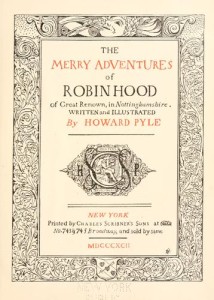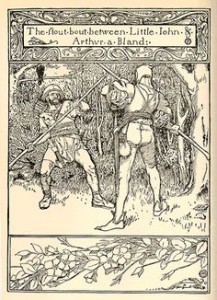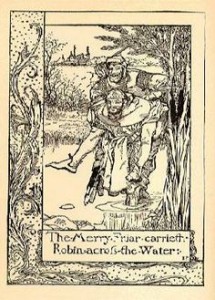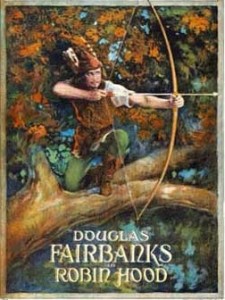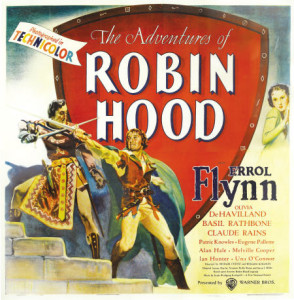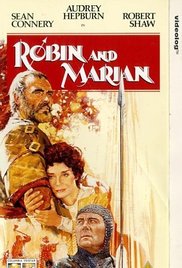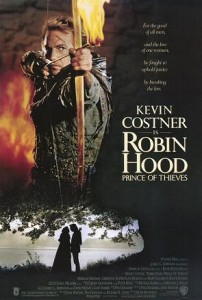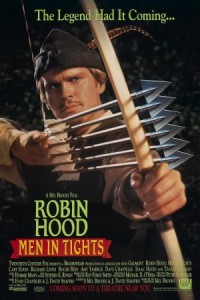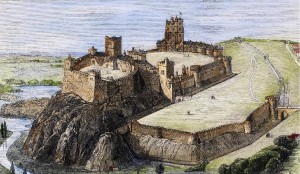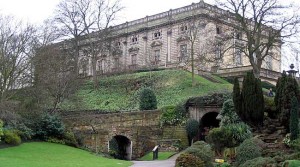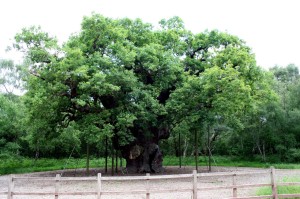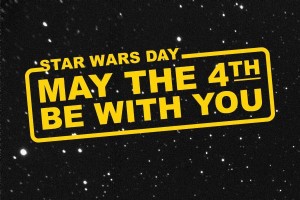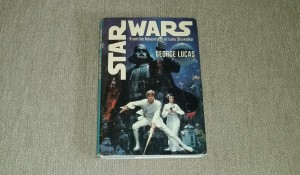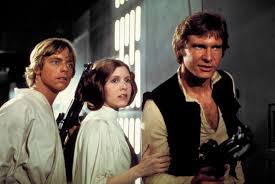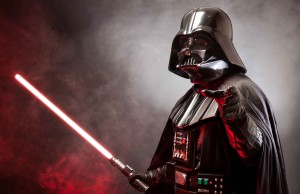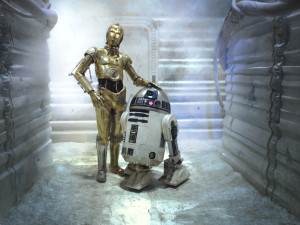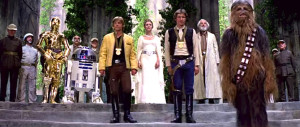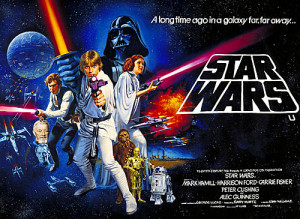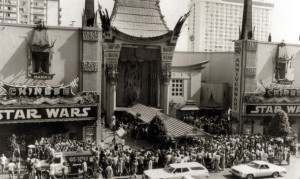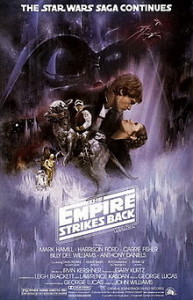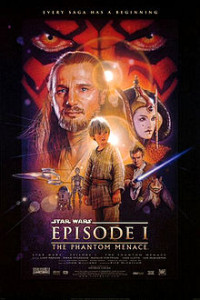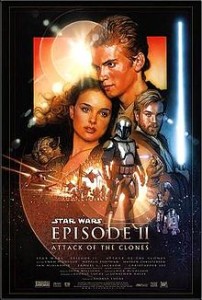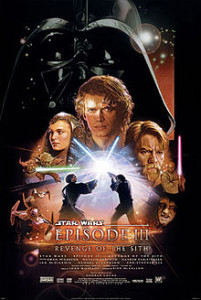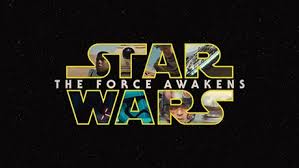In honor of Wallis Simpson’s birthday (born: June 19, 1896 died: April 24, 1986) this post will be about some of the items in her magnificent jewelry collection. The story of the Duke and Duchess of Windsor has been written about extensively in the history books. Wallis met Prince Edward the Prince of Wales in 1931 when he was the heir to the throne of England. Though married to Ernest Simpson, the Prince and Wallis began a scandalous affair (the Prince was known to have an eye for married women).
The affair continued for several years and then in January 1936 King George V died and the Prince became King Edward VIII. Wallis soon divorced Simpson and the new King’s intention was to marry her but there was strong opposition from the British government on a twice divorced women (she had almost been previously married to Earl Spencer) becoming Queen of England. After reigning for only for 11 months, the King abdicated the throne on December 10, 1936.
The new Duke and Duchess of Windsor were married on June 3, 1937 at the Chateau de Cande in France. During their 35 years together the Duke gave Wallis many necklaces, bracelets, brooches and earrings which he often purchased from Van Cleef & Arpels or Cartier. Many of the items were custom designed and given as gifts to commemorate special occasions often inscribed with personal messages from the Duke.
After the death of the Duchess, her jewels were sold at auction by Sotheby’s. The sale took place in April 1987 in Geneva, Switzerland bringing in $50.3 million dollars for the Pasteur Institute which is a hospital and research center located in Paris, France. This was a personal request of the Duchess prior to her death because she and the Duke felt the need to show their appreciation to the people of France where they had lived after being banished from England.
A few of the most important items from the Duchess of Windsor jewelry collection are listed below:
1. The Prince of Wales Brooch
Prince Edward gave Wallis the Prince of Wales brooch in 1935 and it is an important piece of jewelry which bears special meaning since is the symbol of his royal status as the Prince of Wales, the heir to the throne of England, and demonstrates his commitment to her and his intention to make Wallis his future Queen. The brooch was specially commissioned by Prince Edward and features three pave-set diamond feathers accented with baguette-cut diamonds which are gathered together by a crown, the piece is set in platinum and 18k gold.
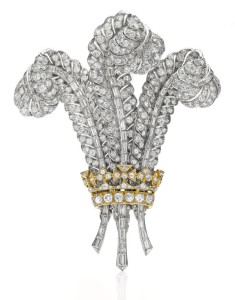
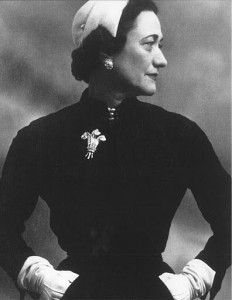
After the death of the Duchess, the Prince of Wales brooch was purchased by Elizabeth Taylor at the Sotheby’s auction for a price over $623,000. Elizabeth and Richard Burton had been friends with the Duke and Duchess and she often admired the brooch during her visits. When the brooch went on the auction block, Elizabeth intended to bid on the item for sentimental reasons since Richard Burton was born in Wales. It is said that the brooch is the first piece of significant jewelry that she had ever bought for herself. Ultimately, upon the death of Elizabeth in 2011 the Prince of Wales brooch was once again sold at the Christie’s auction of Taylor’s jewelry collection for $1,314,500.
2. Cartier Cross Charm Bracelet
The Cartier cross charm bracelet was a gift from Prince Edward to Wallis in 1934. The bracelet features a diamond bracelet with nine jeweled crosses engraved with various messages “handwritten” by the Prince. The bracelet was one of Wallis’ favorite pieces of jewelry from the Prince and she wore it often, most notably she was photographed wearing it on the infamous and highly scandalous Nahlin cruise in the summer of 1936 which publicly exposed the relationship of Wallis and the Prince to the world for the first time.
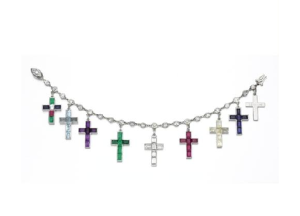
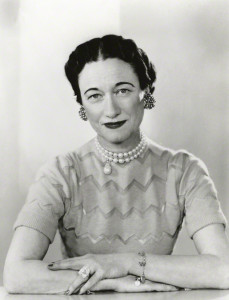
3. Duchess of Windsor Engagement Ring
The engagement ring given by Prince Edward, known to his family and friends as David, to Wallis is a stunning 19.77 carat emerald ring by Cartier. It is engraved with a personal message “We are ours now 27 X 36”. This means that he proposed on October 27, 1936 which according to the date was prior to his abdication. In 1958, the Duchess went back to Cartier to have the ring redesigned in a more modern style of yellow gold set with several diamonds.
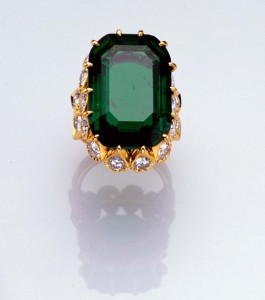
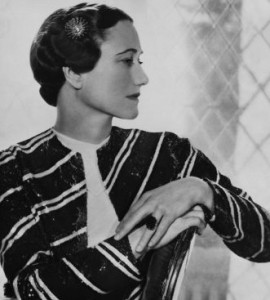
4. Van Cleef & Arpels Ruby and Diamond Brooch
The Van Cleef & Arpels ruby and diamond brooch was given to Wallis from David for Christmas 1936, although they spent the holiday separately. With his recent abdication on December 10, 1936 renouncing the throne of England as King Edward VIII, David went into exile in Austria and while Wallis was living in Cannes, France waiting until her divorce from Simpson was absolute.
Because of these complications, David wanted to send Wallis a special Christmas gift which two holly leaves, the flower of the holiday season. The double feathered brooch was one of the first jewelry pieces from Van Cleef & Arpels to use an “invisible” setting for the rubies and baguette diamonds. At the 1987 Duchess of Windsor auction, held after her death, the Van Cleef & Arpels ruby and diamond brooch sold for an amazing price of $806,000.
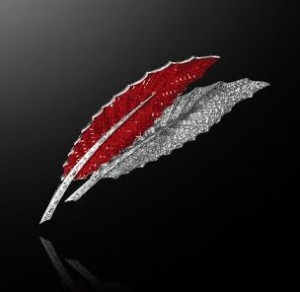
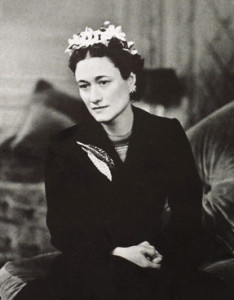
5. Van Cleef & Arpels Ruby and Diamond Necklace
The Van Cleef & Arpels ruby and diamond necklace was originally commissioned by the Duke of Windsor for the Duchess and intended as a gift for her 40th birthday which would take place days after their wedding. The clasp of the necklace is bears the inscription, “My Wallis from her David” and dated June 19, 1936.
Later, Wallis had the necklace redesigned by Rene-Sim Lacaze of Van Cleef & Arpels to incorporate the original rubies and diamonds plus the addition of a few more stones! The new platinum setting featured rows of rubies and diamonds intertwined and ending in a spectacular cascade of rubies. The Van Cleef & Arpels ruby and diamond Necklace sold for an astounding $2,603,308 at the 1987 Duchess of Windsor auction.
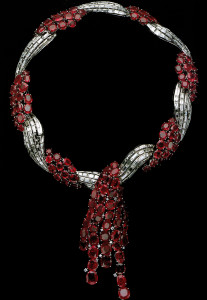
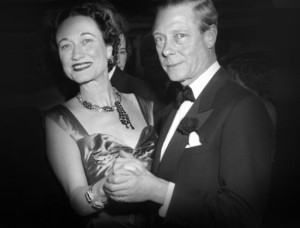
6. Cartier Flamingo Brooch
The Cartier flamingo brooch was commissioned by the Duke of Windsor for the Duchess in 1940 as a birthday gift; he had collaborated with Cartier jewelry designer Jeanne Toussaint. It was completed shortly before the couple had to flee the country during World War II as the Nazis invaded France. The brooch was set in platinum and featured a whimsical flamingo perched on one leg, the flamingo’s body, head, neck and legs are pave-set with diamonds. The flamingo has one sapphire eye and a yellow citrine cabochon and blue sapphire form its beak. The tail feathers of the flamingo were a colorful array of emeralds, rubies and sapphires. Wallis wore the brooch for the first time on a trip to Madrid in 1940 and it became one of her favorite pieces of jewelry and she wore it frequently.
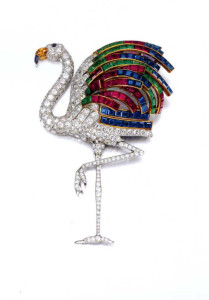
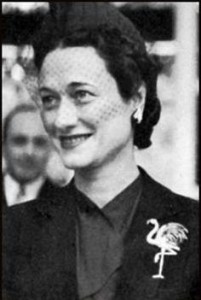
7. Cartier Diamond and Onyx Panther Bracelet
The iconic Cartier diamond and onyx panther bracelet was custom-made for the Duchess of Windsor. In 1952 the Duchess collaborated with the Cartier jeweler Jeanne Toussaint to create the unique design that allows the bracelet to gently wrap around the wrist instead of being rigid. The beautiful and fully articulated body of the panther is set in platinum with diamonds and black onyx; the eyes of the panther are set with marquise-shaped emeralds. At the 1987 Duchess of Windsor auction, held after her death, the Cartier diamond and onyx panther bracelet sold for $1.27 million. Twenty-three years later, the bracelet again went on the Sotheby’s auction block in 2010 and was sold again for £4.5m.
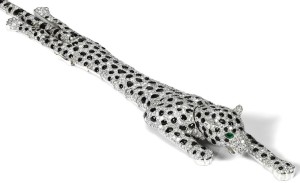
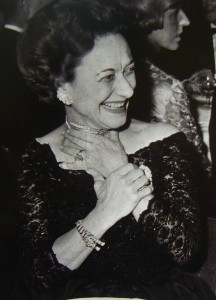
8. Cartier Windsor 20th Wedding Anniversary Brooch
The Cartier brooch was made to commemorate the Duke and Duchess of Windsor’s twentieth wedding anniversary in 1957 and was a gift to Wallis. The brooch was designed to incorporate several meaningful symbols that were important to the couple. The heart-shaped brooch is pave-set with numerous diamonds and measures approximately 34mm x 38mm x 10mm. In the center are the intertwined initials W and E (Wallis and Edward) set with calibré-cut emeralds, beneath that are the Roman Numeral XX (20) set with calibré-cut rubies and at the top of the heart brooch is a coronet set with more calibré-cut rubies.

